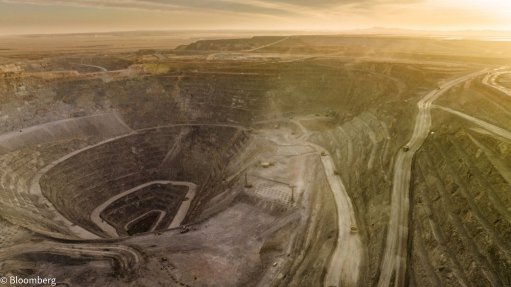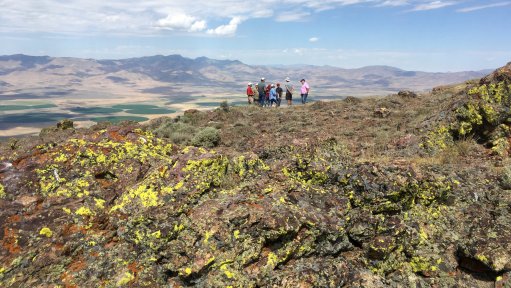African governments misjudge impact of volatile global commodity prices



THOMAS WILSON Africa has the world’s largest unexploited high-grade mining assets
Photo by Duane Daws
GROWTH INTO AFRICA Africa remains the most prospective continent and a final-frontier destination for mining companies worldwide
Photo by Duane Daws
African countries that host mining projects have often sought to renegotiate contracts during periods of high commodity prices, when they should have seized those opportunities to develop the capital intensive projects that only high-price environments make possible, says strategy and communications consulting firm africapractice intelligence and analysis director Thomas Wilson.
He tells Mining Weekly that many host governments misjudge the extent to which mining operations and subsequent investment are affected by changes in global commodity prices. As a result, many of the reforms proposed during the height of the supercycle – now under discussion – seem out of step with commodity prices that have dropped over the past 12 months and are expected to continue to fall.
“For instance, when iron-ore was trading at a record high of $190 in 2011, governments in Guinea and in other countries with high iron-ore deposits had a unique opportunity to push forward with expensive integrated iron-ore and infrastructure projects. Instead, protracted policy reform and contract revisitation processes created confusion when mining companies wanted clarity,” says Wilson , adding that, with the recent decline in commodity prices, this seems like a missed opportunity, which may only present itself again when prices rise again.
“Though iron-ore’s long-term outlook is still positive, commodity prices as a whole are not as strong as they were and, as a result, in certain countries some of the proposed regulatory changes seem out of step with current market dynamics,” he details.
Wilson believes that a better understanding of the impact of global commodity prices will help governments in determining the opportune time to discuss increases to royalty rates and changes in fiscal terms.
He maintains that this will help governments design and implement regulatory frameworks that ensure that projects are developed. It will also ensure that governments receive the tax revenue, local content development and social investment they require.
Nevertheless, Wilson highlights that mining in Africa is on the rise and that it will continue to improve in the coming years. “Africa remains the most prospective continent and a final-frontier destination for mining companies worldwide. The continent boasts many of the world’s largest remaining unexploited high-grade assets, with the potential to produce high-quality mining projects.”
Wilson adds that competition for mineral resources and technological advancements are pushing mining companies into more remote parts in Africa.
“Mining companies are seeking opportunities to develop assets in increasingly diverse geographies, driven by technological advancements and global demand. Further, rising commodity prices over the last twenty years mean that assets previously considered economically unviable are now considered viable,” he elaborates.
Infrastructure Challenge
The lack of sufficient infrastructure in Africa remains a hindrance to the start of new mining operations on the continent. “Developing a greenfield mining project in Africa is often a capital-intensive exercise that requires significant investment in associated infrastructure such as railway lines and power lines,” says Wilson.
“I believe that access to infrastructure is often the single most important factor; a mineral resource is only worth something if the miner can get it to market.”
Rising commodity prices have made remote, isolated reserves economically viable for the first time. The cost of infrastructure to bring such resources to market is often so high, that it only works in a high price environment, he adds.
“For example, several prospective iron-ore projects in the Republic of Congo and Cameroon, which require huge investments in rail and other infrastructure development to enable the transportation of ore to the market, are not commercially viable, with iron-ore trading at low prices,” Wilson concludes.
Comments
Press Office
Announcements
What's On
Subscribe to improve your user experience...
Option 1 (equivalent of R125 a month):
Receive a weekly copy of Creamer Media's Engineering News & Mining Weekly magazine
(print copy for those in South Africa and e-magazine for those outside of South Africa)
Receive daily email newsletters
Access to full search results
Access archive of magazine back copies
Access to Projects in Progress
Access to ONE Research Report of your choice in PDF format
Option 2 (equivalent of R375 a month):
All benefits from Option 1
PLUS
Access to Creamer Media's Research Channel Africa for ALL Research Reports, in PDF format, on various industrial and mining sectors
including Electricity; Water; Energy Transition; Hydrogen; Roads, Rail and Ports; Coal; Gold; Platinum; Battery Metals; etc.
Already a subscriber?
Forgotten your password?
Receive weekly copy of Creamer Media's Engineering News & Mining Weekly magazine (print copy for those in South Africa and e-magazine for those outside of South Africa)
➕
Recieve daily email newsletters
➕
Access to full search results
➕
Access archive of magazine back copies
➕
Access to Projects in Progress
➕
Access to ONE Research Report of your choice in PDF format
RESEARCH CHANNEL AFRICA
R4500 (equivalent of R375 a month)
SUBSCRIBEAll benefits from Option 1
➕
Access to Creamer Media's Research Channel Africa for ALL Research Reports on various industrial and mining sectors, in PDF format, including on:
Electricity
➕
Water
➕
Energy Transition
➕
Hydrogen
➕
Roads, Rail and Ports
➕
Coal
➕
Gold
➕
Platinum
➕
Battery Metals
➕
etc.
Receive all benefits from Option 1 or Option 2 delivered to numerous people at your company
➕
Multiple User names and Passwords for simultaneous log-ins
➕
Intranet integration access to all in your organisation




















